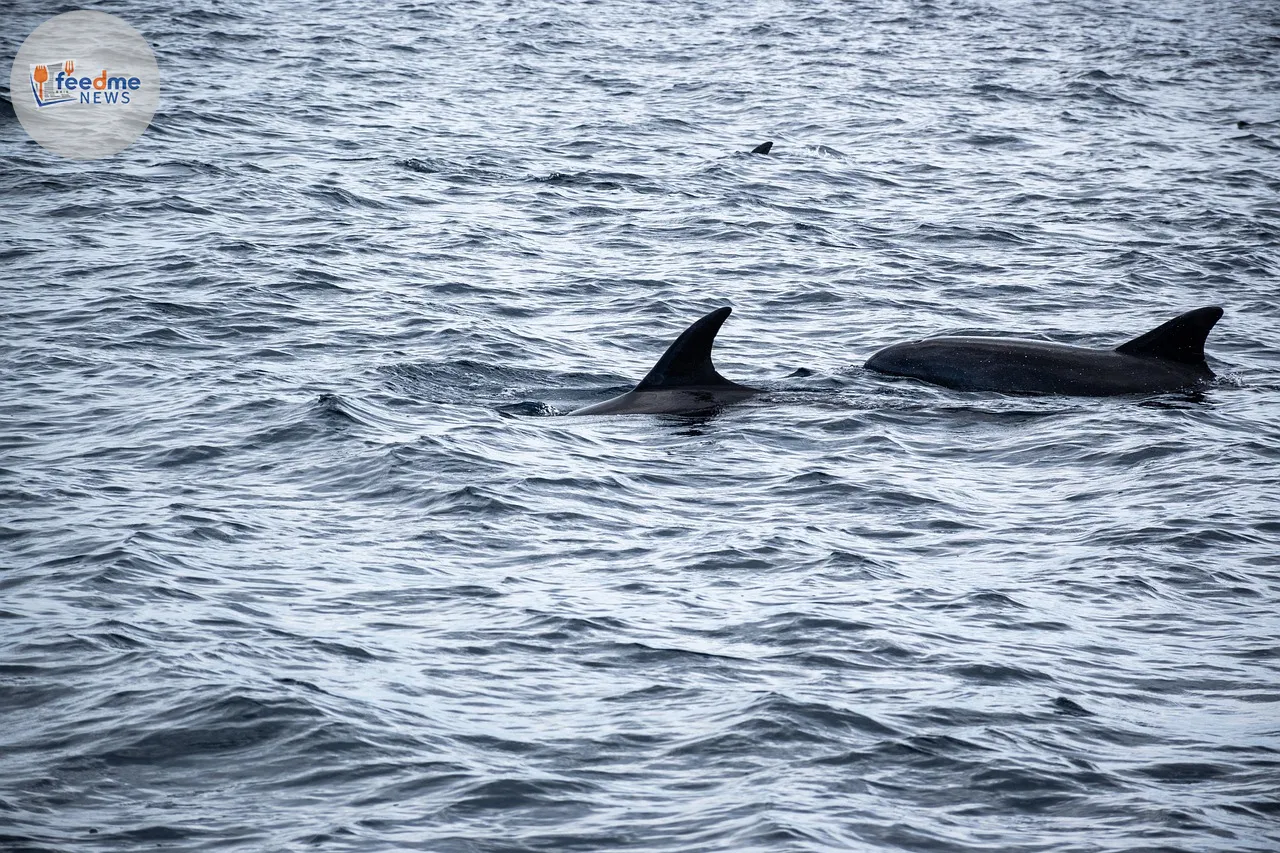A dramatic rescue unfolded on the Welsh coast when a mother dolphin and her calf were saved from stranding themselves. The event, which took place on a serene morning, saw the pair venture perilously close to the shore, risking a potentially fatal stranding. Thanks to the quick actions of local wildlife experts and volunteers, the dolphins were guided back to deeper waters.
The rescue operation, spearheaded by the Marine Conservation Society, highlighted the collaborative efforts between local authorities and conservationists. The quick response not only saved the lives of these intelligent marine mammals but also underscored the importance of vigilance and preparedness in coastal communities.

Danger on the Shore
The incident occurred off the coast of Pembrokeshire, a region known for its rich marine biodiversity. Onlookers first spotted the dolphins in distress on Monday morning, prompting a swift alert to the local marine rescue unit. The dolphins appeared disoriented, a situation that can often lead to stranding, particularly for calves that might struggle to navigate the shallow waters.
Local resident and volunteer, Sarah Hughes, recounted the tense moments leading up to the rescue. “We saw them getting closer to the shore and knew we had to act fast. It’s not uncommon for dolphins to get disoriented, especially in unfamiliar waters,” she explained. The quick intervention by the Marine Conservation Society and local volunteers was crucial in averting a tragedy.
Coordinated Rescue Effort
The rescue operation was a testament to the importance of community involvement in wildlife conservation. The Marine Conservation Society, equipped with specialised knowledge and tools, coordinated with local volunteers to create a human chain, gently guiding the dolphins back to the safety of deeper waters. This method proved effective, as it minimised stress on the animals while ensuring their safe passage.
Dr. Emily Carter, a marine biologist involved in the rescue, emphasised the significance of such operations. “Dolphins are highly social and intelligent creatures. A successful rescue depends on understanding their behaviour and working with them rather than against them,” she noted. The operation concluded successfully, with the dolphins swimming safely away from the shore.
Understanding the Causes
Experts are investigating the reasons behind the dolphins’ disorientation. Factors such as changes in water temperature, underwater disturbances, or even illness can lead to such incidents. Marine biologists are particularly concerned about the impact of human activities, such as shipping and pollution, which can disrupt the natural navigation abilities of marine animals.
Dr. Carter pointed out the broader implications of these incidents. “While this rescue was successful, it raises questions about the health of our marine environment. We need to ensure that human activities are not adversely affecting these creatures’ natural habitats,” she stated. This incident serves as a reminder of the delicate balance required to maintain healthy marine ecosystems.
Community Engagement and Awareness
The rescue has sparked renewed interest in marine conservation among local communities. Educational initiatives are being planned to raise awareness about the importance of protecting marine life and understanding the risks of stranding. These efforts are crucial in fostering a sense of responsibility and stewardship among residents and visitors alike.
Local schools have expressed interest in incorporating marine conservation topics into their curricula, aiming to inspire the next generation of conservationists. “Educating our children about these issues is vital. They are the future custodians of our planet,” said Hughes, reflecting the growing community commitment to preserving marine life.
Looking Forward
The successful rescue of the mother dolphin and her calf is a heartening story of community action and expert intervention. It highlights the importance of readiness and cooperation in addressing wildlife emergencies. As coastal areas continue to experience the pressures of human activity and environmental change, the need for vigilant monitoring and rapid response mechanisms becomes increasingly critical.
Moving forward, conservationists and local authorities aim to enhance their preparedness for such incidents, ensuring that wildlife protection remains a priority. This event serves as a poignant reminder of our shared responsibility to protect the vulnerable creatures that inhabit our oceans.
The story of the rescued dolphins is not just a tale of survival but a call to action, urging us to safeguard the delicate balance of our marine ecosystems for generations to come.





